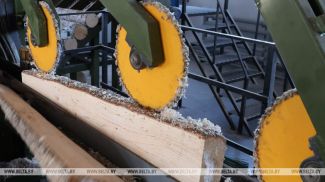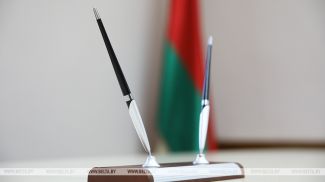
Belarus’ national exposition at the China International Import Expo (CIIE 2025) in Shanghai, which opened on 5 November, is a mirror of modern Belarus, a country with rich traditions, confidently moving ahead while relying on its agriculture, manufacturing sector, science, and high technology, Belarusian First Deputy Minister of Foreign Affairs Sergei Lukashevich said in an interview with BelTA on the sidelines of CIIE. He highlighted certain aspects of Belarus’ exposition and, in general, the interaction with China, and the Belarusian goods that have become popular in the Chinese market.
Belarus’ national exposition is impressive in its vibrancy and product diversity. As we can see, it has attracted enormous visitor attention since its opening. Could you please elaborate on the main focus areas of Belarus’ exposition at CIIE?
Indeed, the interest in our exposition is tremendous. On display here is a wide variety of Belarusian goods that are of great interest to visitors and participants.
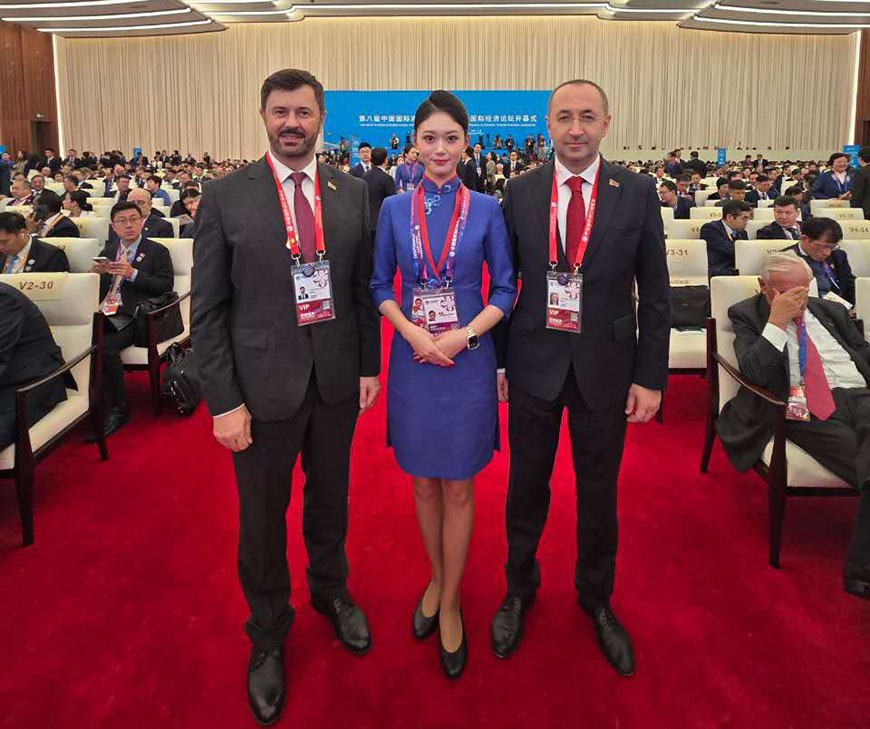
Agricultural produce and food products are our main export items on the Chinese market, one could say Belarus's calling card. Despite a decrease in meat product supplies this year due to lower prices on the consumer market of the People's Republic of China, positive momentum has remained in place in terms of the export of rapeseed oil, dry whey, whole milk products, mineral waters, and alcoholic beverages. Agricultural produce and food products account for over 60% of Belarus's non-potash exports. Belarus makes a significant contribution to ensuring China's food security.
The selection of products for the national exposition at the China International Import Expo (CIIE) in Shanghai was based on several key criteria.
First, it's about showcasing traditions and export diversification. The Food and Agricultural Products pavilion features flagships of our agricultural industry such as Babushkina Krynka and Bellakt to Kommunarka and Slodych. These are the hallmark brands of Belarus, enjoying the well-deserved trust of Chinese consumers. However, today Belarus is not just bringing milk or meat products. We are bringing products with deep processing and innovation. For example, dairy products enriched with probiotics, health foods, and gourmet meat products.
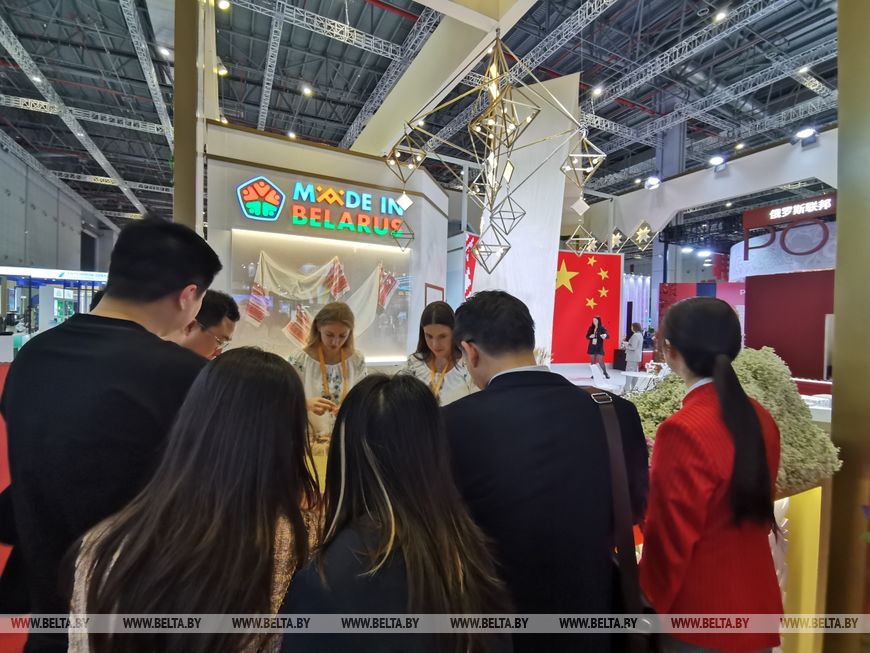
Work is underway to expand the range of brands known in China. While the focus was previously on key manufacturers, today Belarus is presenting its holding companies such as the Mogilev Dairy Company or Brestmyasomolprom Concern, demonstrating the strengths of the entire clusters rather than individual factories.
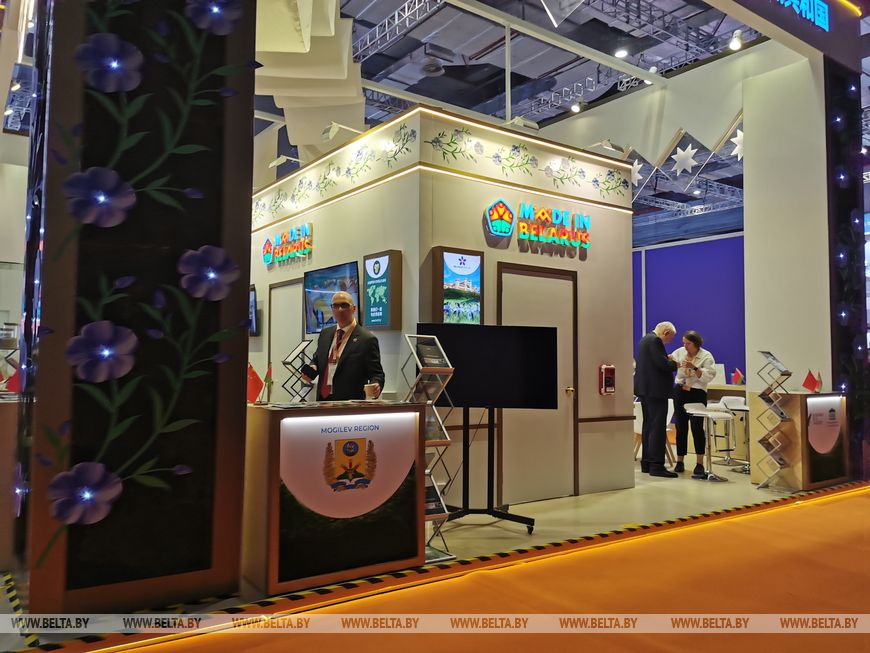

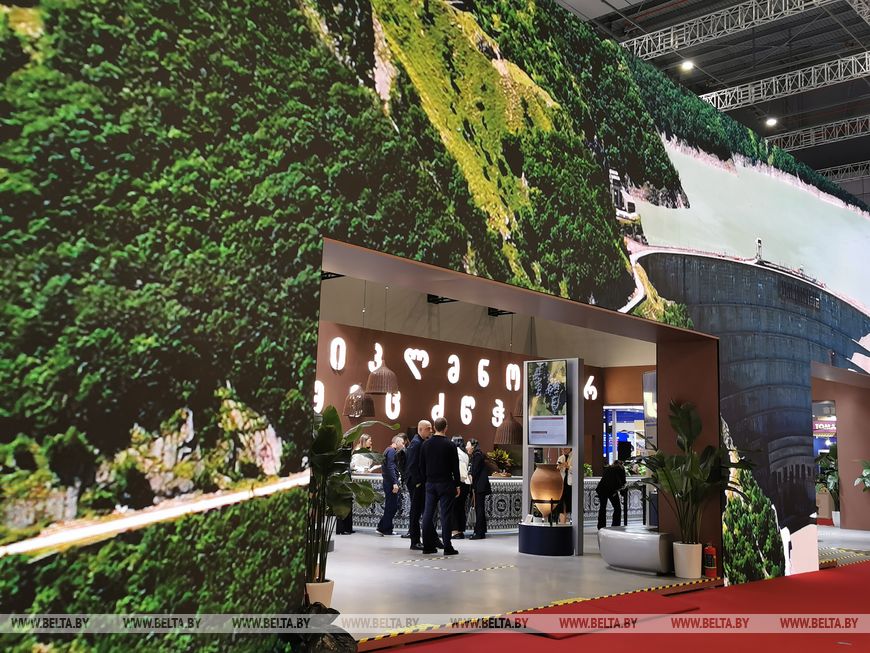
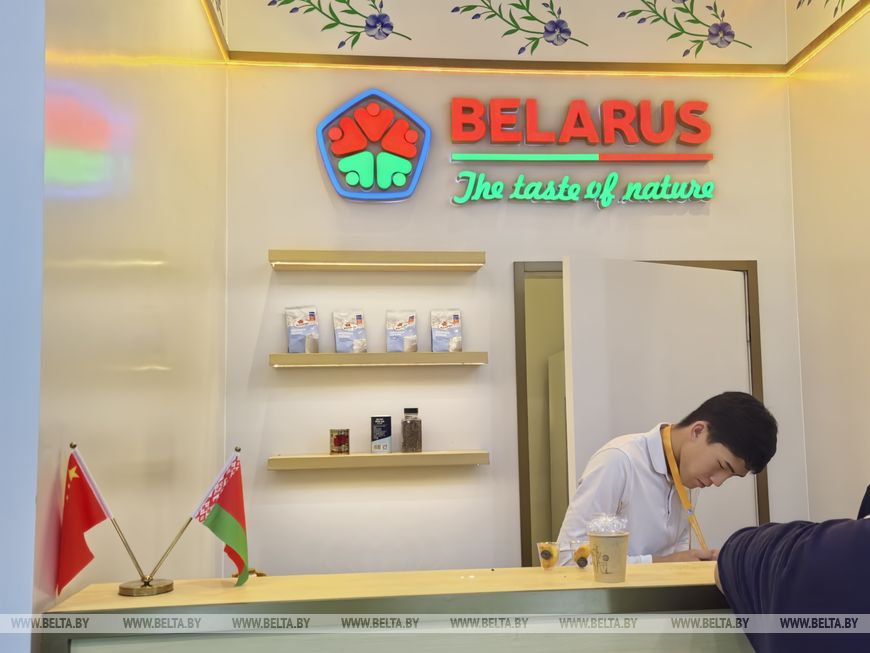
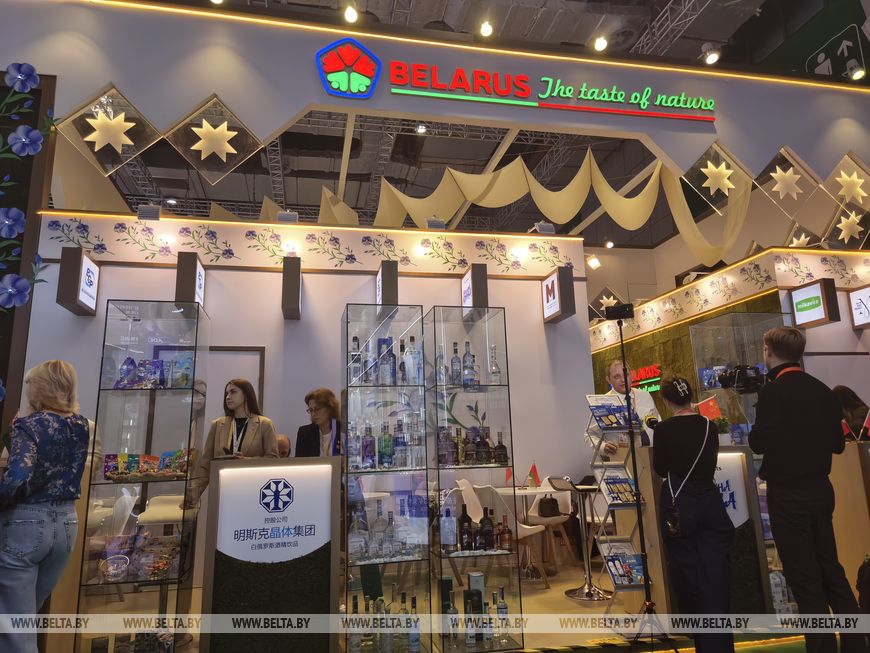

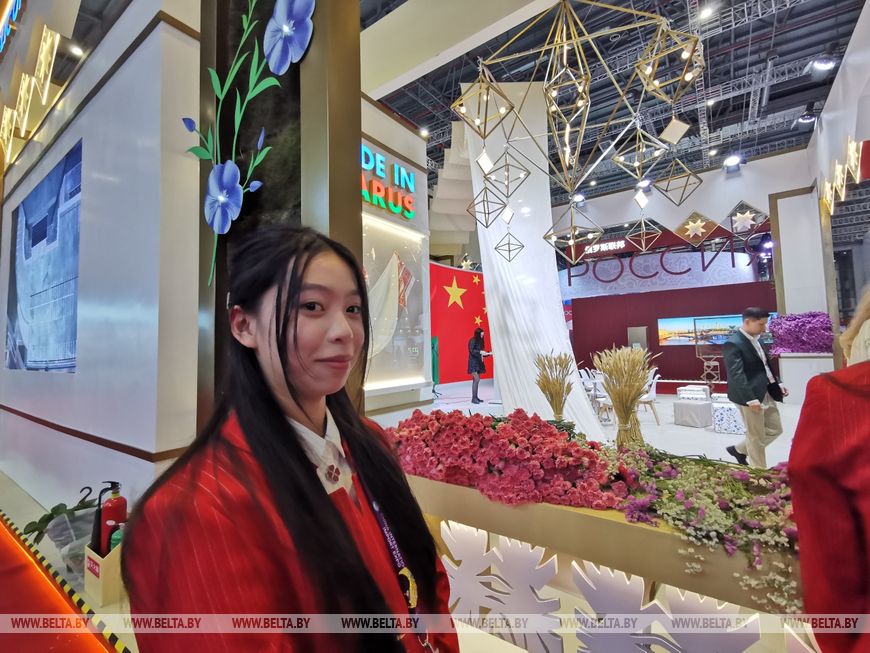

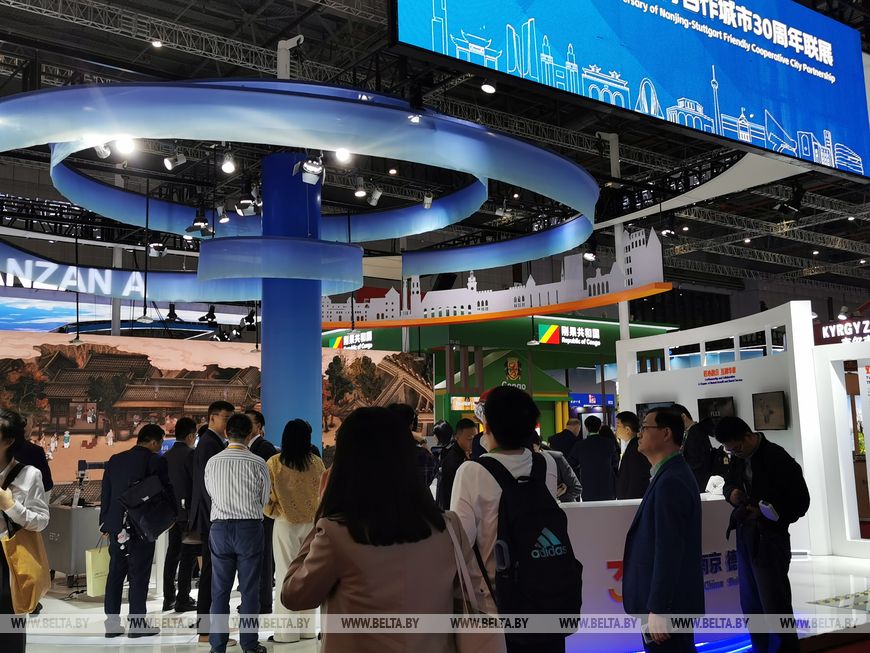


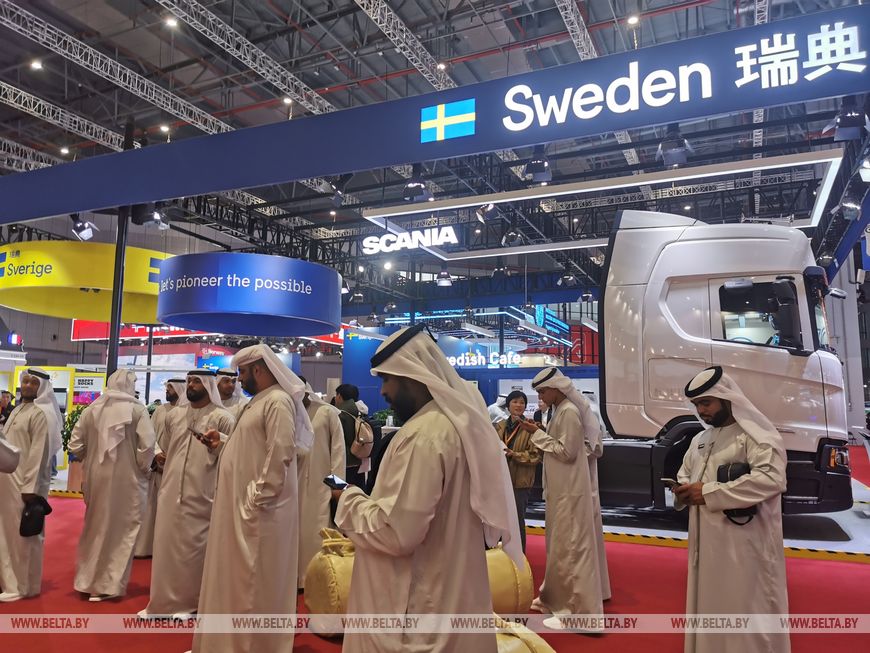



Belarus’ national exposition is impressive in its vibrancy and product diversity. As we can see, it has attracted enormous visitor attention since its opening. Could you please elaborate on the main focus areas of Belarus’ exposition at CIIE?
Indeed, the interest in our exposition is tremendous. On display here is a wide variety of Belarusian goods that are of great interest to visitors and participants.

Agricultural produce and food products are our main export items on the Chinese market, one could say Belarus's calling card. Despite a decrease in meat product supplies this year due to lower prices on the consumer market of the People's Republic of China, positive momentum has remained in place in terms of the export of rapeseed oil, dry whey, whole milk products, mineral waters, and alcoholic beverages. Agricultural produce and food products account for over 60% of Belarus's non-potash exports. Belarus makes a significant contribution to ensuring China's food security.
The selection of products for the national exposition at the China International Import Expo (CIIE) in Shanghai was based on several key criteria.
First, it's about showcasing traditions and export diversification. The Food and Agricultural Products pavilion features flagships of our agricultural industry such as Babushkina Krynka and Bellakt to Kommunarka and Slodych. These are the hallmark brands of Belarus, enjoying the well-deserved trust of Chinese consumers. However, today Belarus is not just bringing milk or meat products. We are bringing products with deep processing and innovation. For example, dairy products enriched with probiotics, health foods, and gourmet meat products.

Work is underway to expand the range of brands known in China. While the focus was previously on key manufacturers, today Belarus is presenting its holding companies such as the Mogilev Dairy Company or Brestmyasomolprom Concern, demonstrating the strengths of the entire clusters rather than individual factories.

Secondly, the focus during the exhibition is on the strategic shift towards exporting high technologies and solutions. The High-Tech Equipment and Information Technology pavilion carries a fundamentally important message for us. We are demonstrating that Belarus is not only about food security but also a technological and intellectual partner for China
This pavilion features high-tech equipment from Planar, deep chemical processing products from Grodno Azot, Polotsk-Steklovolokno and Mozyr Oil Refinery, which serve as core components for China's innovative industries. Science, education, and IT are presented by our “idea generators”: Belarusian State University (BSU), Belarusian National Technical University (BNTU), Belarusian State University of Informatics and Radioelectronics (BSUIR), and the Research and Technology Park "Polytechnic" of BNTU. Akadempharm and the Institute of Bioorganic Chemistry of the National Academy of Sciences of Belarus are presenting innovative pharmaceutical substances and biotechnologies.
Belarus’ exposition reflects the logic of the development of Belarusian-Chinese relations: from trade to cooperation, from procurement to joint investment and scientific projects. We are offering China a comprehensive partnership where Belarusian meat and milk go hand in hand with Belarusian microelectronics, software, and scientific research.

Thus, our exposition at CIIE is a mirror of modern Belarus: a country with rich agricultural traditions that is confidently moving forward, relaying on its manufacturing sector, science, and high technology. We are shaping a new, multifaceted image of a reliable partner for China in the very heart of Europe.
Mr Lukashevich, how important it is for Belarus to take part in exhibition activities in China?
The participation of Belarusian enterprises in Chinese exhibitions is part and parcel of our strategy to promote national exports and strengthen the Made in Belarus brand. This avenue of work is actively supervised and supported at the intergovernmental level.
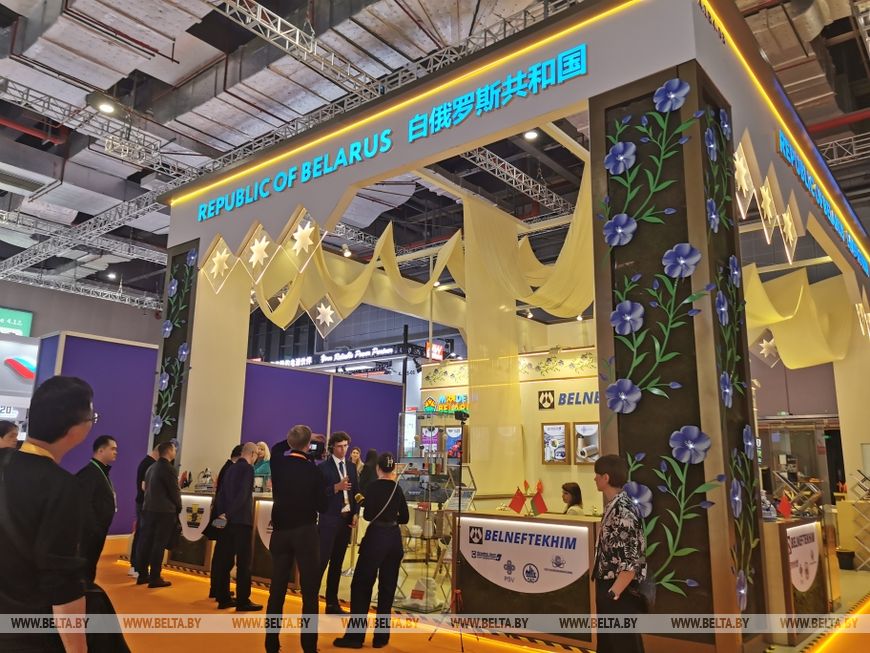

One of the key multi-industry exhibitions remains the China International Import Expo (CIIE) in Shanghai, which I’ve had the opportunity to participate in this year.
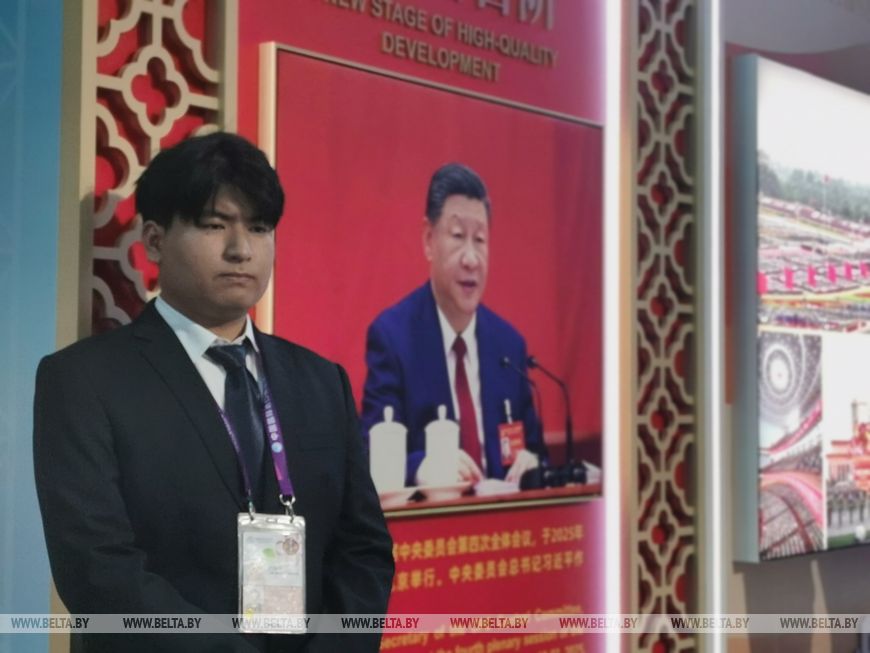
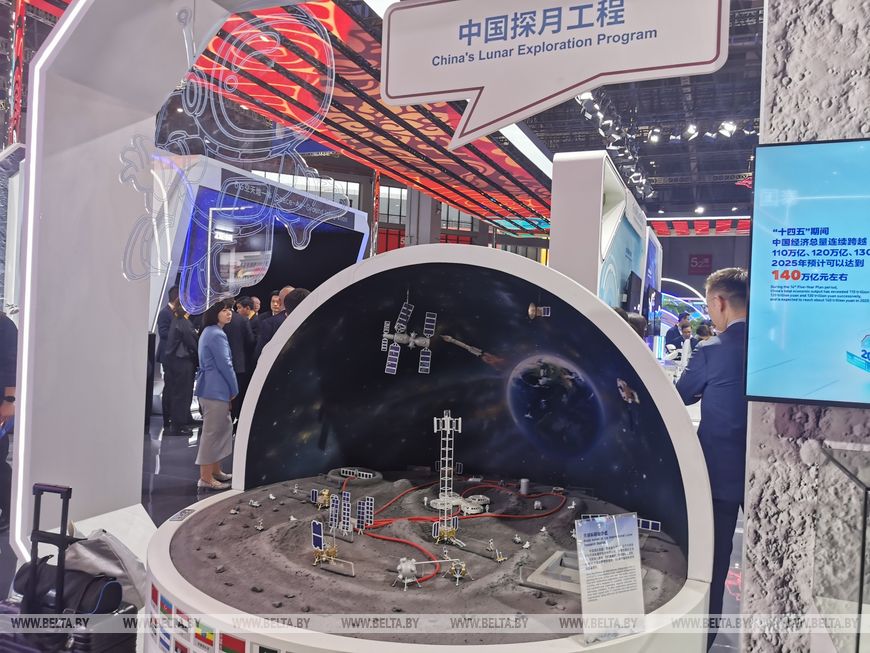
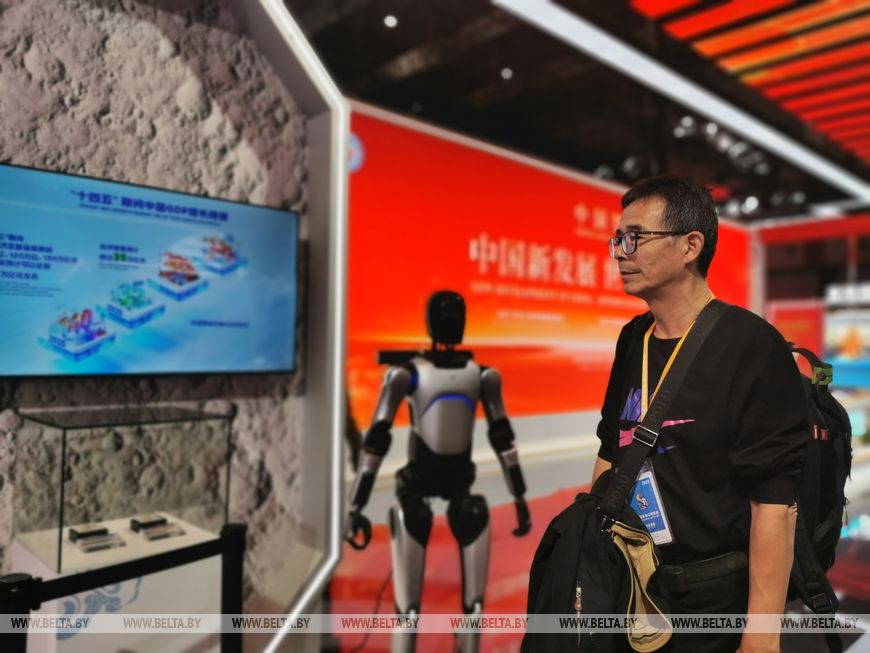
In trade, China is Belarus' primary partner in the Asian region. In 2024, our bilateral trade reached $8.5 billion, a 12% growth year-on-year. Over the past decade, China's share in Belarus' total exports has increased 2.5 times, indicating the growing demand for our goods in the Chinese market.
Belarus ranks among the top 10 suppliers to China for items such as potash fertilizers, rapeseed oil, poultry meat, timber, milk powder, dairy whey, and frozen beef.
Logistics remains an important area of trade cooperation. Belarus is actively developing transport corridors, including railway freight, which contributes to increasing trade volumes. We are also working on expanding “green channels” to accelerate the delivery of goods to China and minimize the costs of overcoming control barriers. Belarus' transport complex possesses all the necessary potential to handle the transportation of the growing volume of trade between our nations and is fully prepared to meet China's needs for freight transport links with the European Union.
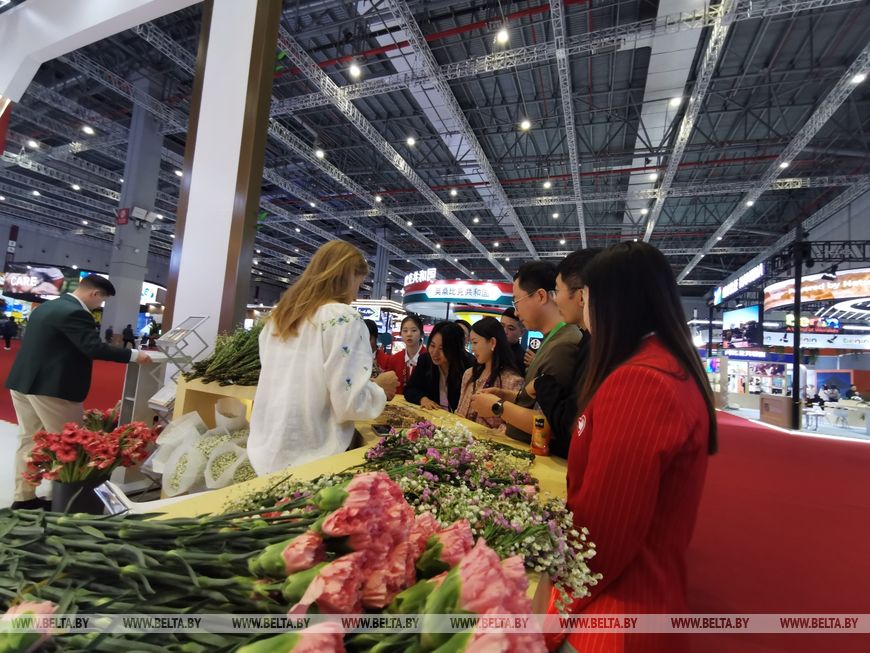
This pavilion features high-tech equipment from Planar, deep chemical processing products from Grodno Azot, Polotsk-Steklovolokno and Mozyr Oil Refinery, which serve as core components for China's innovative industries. Science, education, and IT are presented by our “idea generators”: Belarusian State University (BSU), Belarusian National Technical University (BNTU), Belarusian State University of Informatics and Radioelectronics (BSUIR), and the Research and Technology Park "Polytechnic" of BNTU. Akadempharm and the Institute of Bioorganic Chemistry of the National Academy of Sciences of Belarus are presenting innovative pharmaceutical substances and biotechnologies.
Belarus’ exposition reflects the logic of the development of Belarusian-Chinese relations: from trade to cooperation, from procurement to joint investment and scientific projects. We are offering China a comprehensive partnership where Belarusian meat and milk go hand in hand with Belarusian microelectronics, software, and scientific research.

Thus, our exposition at CIIE is a mirror of modern Belarus: a country with rich agricultural traditions that is confidently moving forward, relaying on its manufacturing sector, science, and high technology. We are shaping a new, multifaceted image of a reliable partner for China in the very heart of Europe.
Mr Lukashevich, how important it is for Belarus to take part in exhibition activities in China?
The participation of Belarusian enterprises in Chinese exhibitions is part and parcel of our strategy to promote national exports and strengthen the Made in Belarus brand. This avenue of work is actively supervised and supported at the intergovernmental level.


One of the key multi-industry exhibitions remains the China International Import Expo (CIIE) in Shanghai, which I’ve had the opportunity to participate in this year.
Belarus regularly presents a national pavilion at CIIE. I would like to note that in recent years we have seen a qualitative growth in our exposition: we are moving beyond traditional food products (dairy, meat, confectionery) to showcasing high-tech goods, including electronics, components for the automotive industry, and IT sector products.
The CIIE is a direct demonstration of our commitment to increasing exports to China.
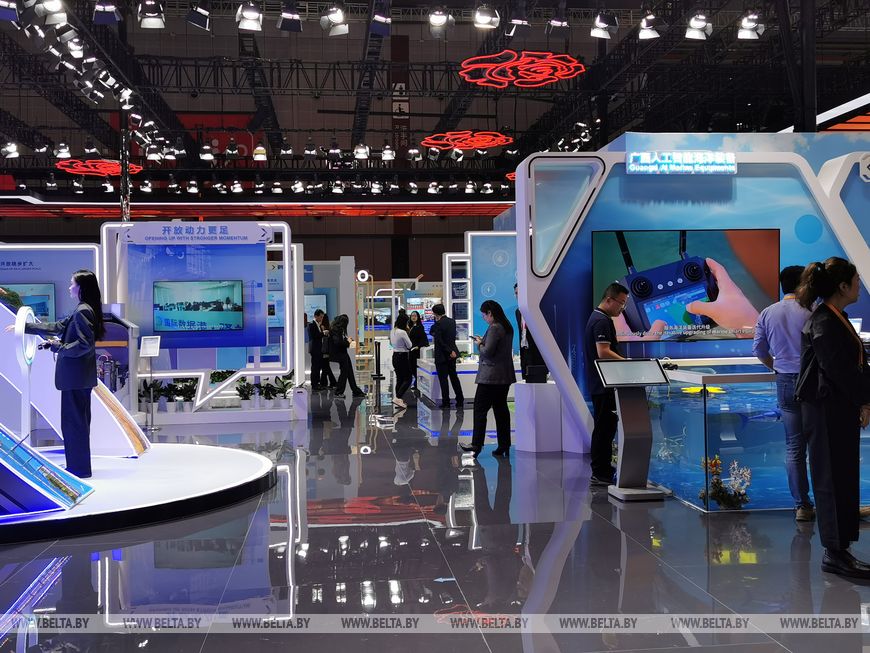
Another important “window” for Belarusian goods into China's western regions and Central Asian countries is the China-Eurasia Expo in Urumqi. There, our producers of food, beverages, and consumer goods find new partners. Participation in this expo underscores Belarus' role as a logistics and trade hub within the Belt and Road Initiative.
We also know that successful contracting requires connecting with niche professional audiences. Here, Belarusian companies are increasing their activity on other platforms. These include the Canton Fair, one of the oldest and largest trade fairs, which attracts our producers of industrial goods, equipment, and consumer products. I must say, it is a proven platform for establishing direct contacts with Chinese distributors and manufacturers. It is here that we expand our cooperation along the tracks of export, import, and the search for partners to implement joint production projects.
The SIAL exhibition is a major annual event for our agribusiness giants, such as Savushkin Product, Babushkina Krynka, and the Belarusian food industry concern Belgospishcheprom. It is there that contracts for the supply of dairy, meat, and other food products are signed, which directly contributes to the objectives of increasing agricultural exports.
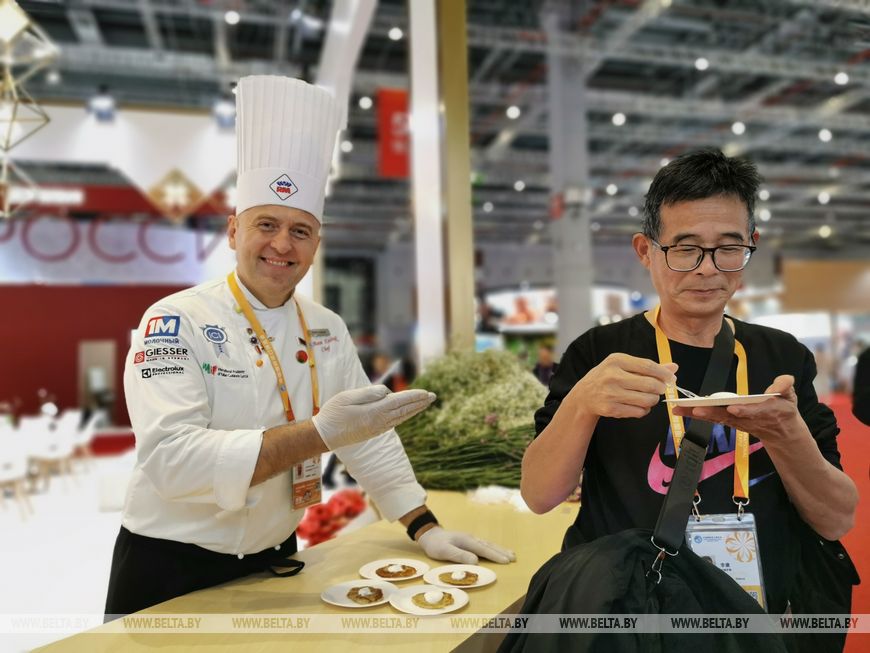
I would like to emphasize that the participation of Belarusian enterprises in Chinese exhibitions is systematic, large-scale, and of a qualitatively growing nature. We are witnessing an evolution from the presentation of raw commodities to the promotion of high-value-added, technologically advanced products. Each such exhibition is not only an opportunity to secure direct contracts but also an important step in building a positive image of Belarus as a reliable and technologically advanced partner for China in the heart of Europe.
Belarus and China are bound by the strong ties of an all-weather and comprehensive strategic partnership and an ironclad brotherhood. In your opinion, what has been the foundation of this?
Belarus and China demonstrate to the world an example of genuine, open, and effective cooperation. This has been made possible by the profound personal friendship and mutual trust between the leaders of our two countries, and their shared commitment to developing mutually beneficial relations, which have reached the level of an all-weather and comprehensive partnership.

As Belarusian head of state Aleksandr Lukashenko has repeatedly emphasized, China is our key political and economic partner. We see immense potential in the Belt and Road Initiative for integrating the Belarusian economy into global supply chains, and the Chinese market, with its population of nearly 1.5 billion people, is of colossal interest to us.
China views Belarus as a key partner within this initiative, which entails long-term investments and the implementation of joint projects aimed at developing transport infrastructure, industry, and trade. This partnership plays a vital role in strengthening Belarus' economic sovereignty.
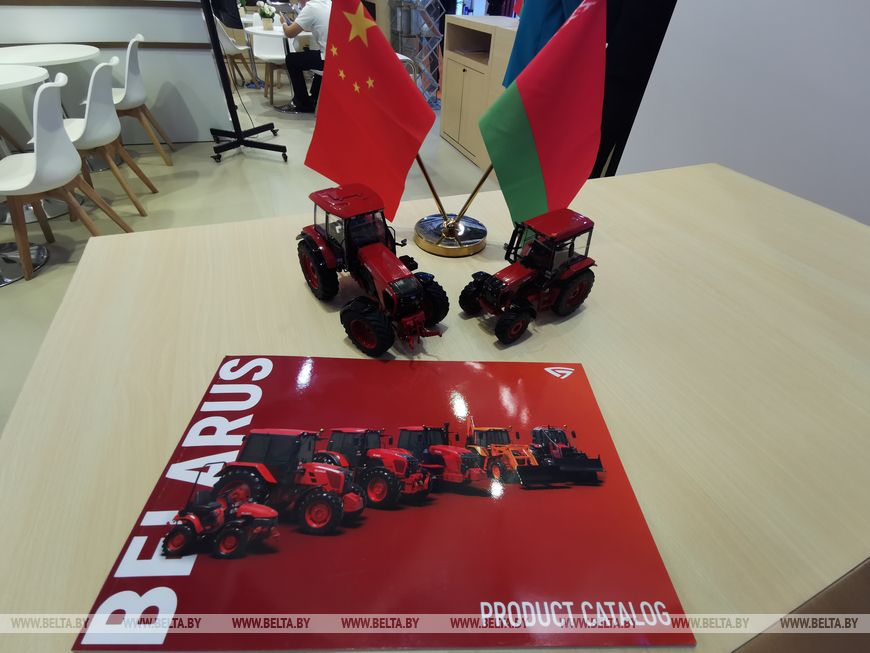
The CIIE is a direct demonstration of our commitment to increasing exports to China.

Another important “window” for Belarusian goods into China's western regions and Central Asian countries is the China-Eurasia Expo in Urumqi. There, our producers of food, beverages, and consumer goods find new partners. Participation in this expo underscores Belarus' role as a logistics and trade hub within the Belt and Road Initiative.
We also know that successful contracting requires connecting with niche professional audiences. Here, Belarusian companies are increasing their activity on other platforms. These include the Canton Fair, one of the oldest and largest trade fairs, which attracts our producers of industrial goods, equipment, and consumer products. I must say, it is a proven platform for establishing direct contacts with Chinese distributors and manufacturers. It is here that we expand our cooperation along the tracks of export, import, and the search for partners to implement joint production projects.
The SIAL exhibition is a major annual event for our agribusiness giants, such as Savushkin Product, Babushkina Krynka, and the Belarusian food industry concern Belgospishcheprom. It is there that contracts for the supply of dairy, meat, and other food products are signed, which directly contributes to the objectives of increasing agricultural exports.

I would like to emphasize that the participation of Belarusian enterprises in Chinese exhibitions is systematic, large-scale, and of a qualitatively growing nature. We are witnessing an evolution from the presentation of raw commodities to the promotion of high-value-added, technologically advanced products. Each such exhibition is not only an opportunity to secure direct contracts but also an important step in building a positive image of Belarus as a reliable and technologically advanced partner for China in the heart of Europe.
Belarus and China are bound by the strong ties of an all-weather and comprehensive strategic partnership and an ironclad brotherhood. In your opinion, what has been the foundation of this?
Belarus and China demonstrate to the world an example of genuine, open, and effective cooperation. This has been made possible by the profound personal friendship and mutual trust between the leaders of our two countries, and their shared commitment to developing mutually beneficial relations, which have reached the level of an all-weather and comprehensive partnership.

As Belarusian head of state Aleksandr Lukashenko has repeatedly emphasized, China is our key political and economic partner. We see immense potential in the Belt and Road Initiative for integrating the Belarusian economy into global supply chains, and the Chinese market, with its population of nearly 1.5 billion people, is of colossal interest to us.
China views Belarus as a key partner within this initiative, which entails long-term investments and the implementation of joint projects aimed at developing transport infrastructure, industry, and trade. This partnership plays a vital role in strengthening Belarus' economic sovereignty.


Following the visit of Chinese Premier Li Qiang to Belarus in August 2024, the governments of our two countries were tasked with studying and applying the experience of Chinese modernization, and developing new quality productive forces through joint projects and the introduction of Chinese technologies in Belarus. To advance this direction, a bilateral commission on industrial cooperation was established in May 2025, and the years 2026-2027 have been declared the Years of Industrial Cooperation. Joint projects are being implemented with high-tech Chinese companies for the localization and creation of new production facilities in the automotive industry (with Geely), refrigeration equipment manufacturing (with Midea), foundry production, machine tool building (with companies such as Shandong Deed Precision Machine Tool Co., Ltd., Genertec, and Smartech), and a number of other sectors.


In trade, China is Belarus' primary partner in the Asian region. In 2024, our bilateral trade reached $8.5 billion, a 12% growth year-on-year. Over the past decade, China's share in Belarus' total exports has increased 2.5 times, indicating the growing demand for our goods in the Chinese market.
Belarus ranks among the top 10 suppliers to China for items such as potash fertilizers, rapeseed oil, poultry meat, timber, milk powder, dairy whey, and frozen beef.
Logistics remains an important area of trade cooperation. Belarus is actively developing transport corridors, including railway freight, which contributes to increasing trade volumes. We are also working on expanding “green channels” to accelerate the delivery of goods to China and minimize the costs of overcoming control barriers. Belarus' transport complex possesses all the necessary potential to handle the transportation of the growing volume of trade between our nations and is fully prepared to meet China's needs for freight transport links with the European Union.

The Belarusian Railways has established constructive cooperation with the state-owned corporation China Railway, which guarantees the smooth passage of current freight traffic while also enabling a major expansion of freight volumes and higher train speeds for traffic with China.
In the near future, we plan to expand the range of export products, develop e-commerce, attract Chinese companies to set up joint ventures, and strengthen interregional cooperation. Our goal is to make high-quality Belarusian goods available in all provinces of China.
Shanghai is a major financial, scientific, and cultural center of China. Therefore, can we say that Belarus’ relations with Shanghai are of particular importance and are developing in the spirit of long-term mutually beneficial cooperation?
Minsk and Shanghai are sister cities. Furthermore, three separate sister-city agreements have been signed between districts of Minsk and Shanghai.

The current year can probably be called one of the most active periods of Belarus-Shanghai cooperation. As the guest of honor at the 18th Pujiang Innovation Forum, Belarus extensively presented its innovative products: developments of Belarusian organizations and achievements of Belarus-China scientific and technical cooperation. Being the guest of honor at a forum of such a high level was a special honor for us. It was probably the first time our country’s name was displayed on the Shanghai Tower! However, the main outcome of the forum was, of course, the signing of a number of cooperation agreements between scientific organizations.
Belarus ensures the large-scale participation of its manufacturers in the region’s largest international exhibitions every year. I have mentioned it before, but I would like to emphasize it again: this includes Belarus’ participation in the China International Import Expo, which is currently taking place, and the SIAL China international food exhibition, which was held in May.
Shanghai has a developed production of electric motors, industrial robots, medical technology and equipment, electronics, and electrical equipment. Domestic enterprises have significant potential for deepening economic partnership and are keen to cooperate with companies from Shanghai.

Humanitarian cooperation in education, culture, healthcare is developing very actively. The key Shanghai-based university partner for Belarus is East China Normal University (ECNU), which has been hosting the first Center for Belarusian Studies in China since 2012. On the initiative of the Chinese partners and upon the request of Yanka Kupala Grodno State University, approved by the Belarusian Ministry of Education, work began this year to establish a joint laboratory with Fudan University, the Interdisciplinary Research Center for Complex Systems.
I would like to emphasize that scientific and practical cooperation in healthcare has been established between the Belarusian Mother and Child National Research and Practical Center and the Shanghai First Maternity and Infant Hospital, as well as between the Shanghai Sunshine Rehabilitation Center and the Belarusian National Center for Medical Rehabilitation and Balneology. In 2025, the Belarusian Research Center for Surgery, Transplantology and Hematology and the Shanghai Pulmonary Hospital forged partnership ties. Their medical professionals will exchange experience in thoracic surgery and traditional Chinese medicine.

Here is another point. Quite recently, the Dialogue of Cultures exhibition of modern Chinese art photography (Shanghai) opened at the Mikhail Savitsky Art Gallery in Minsk. The project brought together works by four outstanding masters of photography from different generations: Shen Zhonghai, Xu Haifeng, Ye Zile, and Chen Chuanduan. These are Shanghai-based photographers who have gained worldwide recognition. Now, Belarusian residents have also had the opportunity to enjoy their works. Thus, as we can see, cooperation with Shanghai is developing in many areas.
In general, Belarusian enterprises, organizations, and regions are introducing themselves to the Chinese audience. We also host a large number of delegations from China in Belarus every year. Shanghai, of course, is at the forefront of our bilateral cooperation in this regard. According to updated information, in H1 2025, the growth rate of trade with Belarus amounted to 75.7%, including a growth rate of imports from Belarus of 64.3%. Overall, there is significant potential for economic and trade partnership between the regions of Belarus and Shanghai in all areas.

What Belarusian products have already become popular on the Chinese market?
In foreign trade with China, continuous work is underway to increase exports and raise the number of Belarusian enterprises accredited for supplies to China. Interaction with Chinese sectoral government bodies, chambers of commerce, and trade associations is expanding. Effective transport corridors are being developed and established.
This year alone we’ve secured accreditation for ten new food producers, acquired 20 new numbers for nine kinds of products, which have not been exported to China before. At present 255 effective export numbers for 191 Belarusian producers of foods are registered with the China Import Food Enterprises Registration (CIFER) system of the General Administration of Customs of the People’s Republic of China. The new products include instant porridge and cereal, wheat gluten, dry milk mixes, canned vegetables, sauces, baby food, starter cultures for the food industry, flour, cereals, and much more.

Apart from that, we’ve made significant progress in supplying timber, cellulose, electronic integrated circuits, parts and accessories for information processing machines, carbon, processed flax, and alcoholic beverages. In January-August 2025 the export growth rate for these items was on average 1.5-2 times higher than last year.
Let’s return to the topic of the CIIE in Shanghai, which is taking place on 5-10 November. What does the Belarusian side expect from the expo?
Participation in the China International Import Expo in Shanghai is an investment in the future of Belarusian-Chinese trade and economic partnership.

The Belarusian government and exhibitors expect concrete, measurable results from the expo in a number of areas.
First, as I have already said, we expect growth and diversification of Belarusian export to China.
The government wants the exhibitors to not only confirm existing shipments, but also significantly increase the range and volume of products. We expect that traditional agricultural and food exports (from Babushkina Krynka Company, Bellakt Company, meat processing plants) will be supplemented by long-term contracts for the supply of new types of deeply processed products.
Secondly, we expect to strengthen confidence in the “Made in Belarus” brand and establish direct long-term relationships.
For Belarusian companies the CIIE is a unique opportunity to work directly with the largest Chinese distributors, retailers, and industrial groups, bypassing multi-level intermediaries. We expect that face-to-face meetings and negotiations at the expo will enable our exporters not only to sign new contracts, but also to form stable supply chains, understand the intricacies of consumer preferences, and adapt their products accordingly.

We also aim to promote the sociocultural and tourism potential to strengthen the country’s image in the international arena and increase its recognition. The country pavilion has been very warmly received by visitors to the expo. They also welcome performances by the Belarusian State Academic Honored Choreographic Ensemble Khoroshki, presentations on higher education, vocational education, and digital education in the Republic of Belarus, and presentations of our tourism potential. Throughout the expo interactive events are organized: samplings of Belarusian cuisine, master classes on wreath weaving, making beads and bracelets, straw weaving, distribution of souvenirs and printed materials with Belarusian symbols in English and Chinese.
We expect our leading scientific and educational institutions and high-tech companies not so much to sign immediate contracts as to conclude memorandums of understanding, create joint laboratories, and launch innovative projects.
Based on your observations, what do the Chinese like about Belarus?
Thank you for your question. It allows us to look at our partnership not only from an economic point of view, but also from a civilizational point of view.
Chinese partners, from government officials to private sector representatives, consistently emphasize that they value the highest level of political trust and reliability in Belarus. In an unstable global environment Belarus has proven itself to be a country that always keeps its word and fulfills its commitments. This is not just rhetoric. It is the foundation on which projects worth billions are built.

When it comes to Belarusian products, China is no exception. As in many countries where Belarus sells its agricultural products and foods, Chinese consumers appreciate their quality and environmental credentials.
Belarusian meat and dairy brands are associated in China with clean, natural, and safe products. In a country with a high level of urbanization and demand for healthy food, Belarusian food products have become synonymous with “the taste of childhood” and “European standards.” We are valued for our benchmark milk, natural canned meat, and high-quality confectionery.
By the way, the launch of the National Pavilion of the Republic of Belarus in the Chinese digital space in 2022 has provided Belarusian products with direct access to the Chinese end consumers. The number of subscribers grows daily and has already exceeded 2.8 million people. Belarusian chocolate, milk powder, sweets, breakfast cereals, and beverages are in the highest demand.
I would also like to note that more and more Chinese tourists are discovering Belarus, and they like what they see: cleanliness, order, safety in the streets, and a rich cultural and historical heritage.
The image of Belarus as a country with beautiful nature and hospitable people is beginning to occupy a worthy place in the tourist preferences of the Chinese middle class.






By BelTA’s Alina Grishkevich







